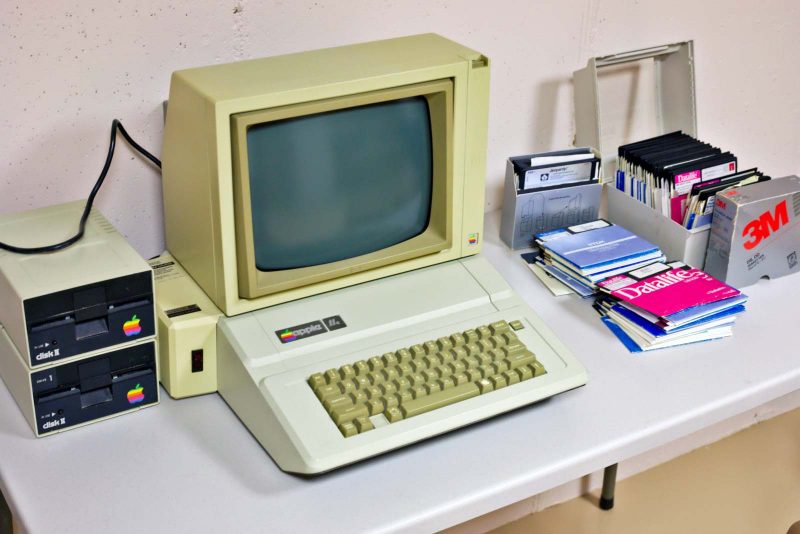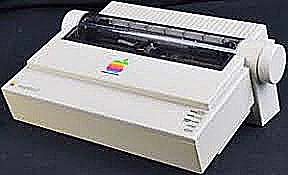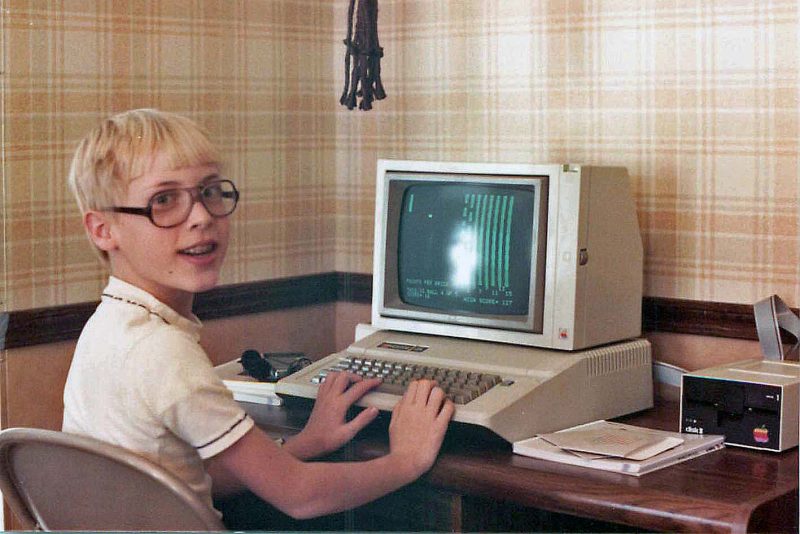In 1982, Ted and I bought an Apple IIe computer for the family. It cost us $2,000 for the monitor, the processor, and a disk drive. We added an Apple ImageWriter color printer for $500 and an 80-column card to display more of that green text on the monitor. The ImageWriter (and all personal printers at that time) required tractor-feed paper. That’s actually a feature I occasionally miss. We used to print banners on tractor feed paper and you can’t do that on the individual sheets of paper personal printers use now. The processor had a 56K data storage capacity and used 5¼-inch floppy (literally) disks. Compare that to today’s PC and printer prices, storage capacity, and flash drives.
To use the Apple IIe, we had to insert a separate program disk for each program we wanted to use. To save a file, we had to remove the program disk and insert a blank disk. This became cumbersome (even in the early days of personal computing, we expected fast), so we bought a second disk drive.



That 56K data capacity made it necessary for me to save my 20-page graduate papers on three disks, because 10 pages of text was nearly 56K of data. I usually saved the files for the text of my papers on two disks, and I saved the title page, table of contents, and bibliography on a third one. For my final copy, I had to manipulate the page numbers in the three files and I had to make sure the second text file began with the word immediately following the last word in the first text file so the paper would read correctly. After printing the three files, I had to arrange the pages in order. Whew! That was tricky, but copy, cut, and paste was a lot better than typing and re-typing on a typewriter.

When hard disk drives became available, we upgraded from the Apple IIe, but we kept it with all the original parts and manuals in a box in the basement. I thought that, at some time in the future, it might be fun to set it up again to bring back good memories when the kids came to visit. We finally did this when the family was here for our 50th anniversary weekend. Ted and I set out the pieces, and Jeff and Thom got everything connected properly. Then they tried playing some of their favorite games: Dig Dug, Lode Runner, and Apple Panic. They were primitive compared to today’s games, but we all enjoyed playing them in the 1980s.


We offered the Apple IIe to the kids, but none of them wanted it. Ted and I were not interested in selling it online and we didn’t know anyone else who might want it, so we took it to Best Buy to recycle it. When we carried it in, we were stopped twice by people who said “Is that an Apple IIe?” and “You could probably sell that for a couple thousand dollars.” (Maybe, maybe not. Probably not.) We offered it to an employee who admired it, but he said that once it’s in the store, they can’t take it home. I offered to carry it back to the parking lot and give it to him there, but he said he’d probably lose his job if Best Buy management found out he kept anything that had been brought in for recycling.
Here’s our last view of our 37-year-old first PC–complete with recycling labels.

Ed. note: Jeff took more pictures of the Apple IIe than I did, so I lifted some of the photos above from his blog post. Thank you, Jeff.